I don't understand how we can model an NPN transistor with two diodes with their anodes connected. Shouldn't they be in series, with the base being in-between the diodes? An NPN transistor is in active mode when the base has a higher potential then the emitter and when the collector is at a higher potential than the collector. Having them in series makes much more sense. If the anodes are connected then the collector potential would have to be so much higher than the base to conduct in the wrong direction.
-
If the two diodes were in series how would you control the conductance? You'd just have two diodes. – Transistor Oct 12 '21 at 12:14
-
We don't want two diodes in series. We want one diode to be forward-biased, which when conducts to cause the reverse-biased junction to avalanche. As the transistor says, what would two diodes in series give you. – StainlessSteelRat Oct 12 '21 at 20:02
4 Answers
Why isn't the NPN diode model two diodes connected in series?
A bipolar transistor is sometimes used in place of two diodes, as in the inputs to TTL gates. However, there is something that happens in a transistor that does not happen in two discrete diodes connected either anode to anode or cathode to cathode.
In a reverse biased diode, there is typically only a very small number of minority carriers in either the anode or cathode. As a result the current across the junction in a reverse biased diode is very small, i.e. leakage current.
However, in a bipolar transistor, when the emitter-base junction is forward biased, majority carriers cross over from the emitter to the base, where they become minority carriers. That is, minority carriers are "injected" into the base. Now, the base-collector diode will have many minority carriers (on the base side), even if it is reverse biased. This allows current to flow across the base-collector diode even when reverse biased. That is, the current from emitter to base creates minority carriers in the base, which allows current to flow from the base to the collector, even when the base-collector junction is reverse biased.
That is probably the most significant difference between a bipolar transistor and two discrete diodes connected anode to anode or cathode to cathode.
Now, why aren't bipolar transistors symmetrical? Why are the forward active characteristics different from the reverse active characteristics? Why aren't the emitter and collector equivalent? Bipolar transistors are not intrinsically asymmetrical. Rather, that is a design choice. By doping the emitter more heavily than the collector, a transistor is made that has a higher amplification (in the forward active region) than a symmetrical transistor would have. That is, symmetry is sacrificed for the sake of gain.
- 18,947
- 3
- 19
- 65
Your proposed model is invalid because, while a transistor in its active region does pass collector current, as long as the transistor is biased "normally" (i.e., the collector-base junction is in reverse bias) that current is fairly insensitive to the collector-base voltage. If it were accurate to model a transistor as two diodes in series, then a transistor with a collector-to-emitter voltage would simply conduct, with two diode drops. That does not happen.
That is one, very simplified, model of an NPN transistor. If you get serious about circuit design you'll find that there are a number of models, each of which is either incomplete in some way, horribly complicated, or both at the same time. Part of using them is knowing when to use which one.
Where that model fails to give you understanding is that the base region isn't connected to two independent diodes. It's one sheet of P-type semiconductor material, forming both P-N junctions in the transistor, and tying the behavior of the two junctions together in a way that two independent diodes will never be.
In a junction transistor, when there is base current flowing, electrons are injected into the base region by the aptly-named emitter; some of these electrons manage to flow into the base, but the majority (if it's a good transistor) are swept into the aptly-named collector.
That coupling between the emitter and collector via the base is what causes a transistor to amplify -- a little bit of current going into the base causes a much larger current to flow from collector to emitter, and (because the collector diode is reverse-biased), a small voltage variation at the base can lead to a large voltage variation at the collector.
A much much more accurate model, if you know what a dependent source is, is the Ebers-Moll model -- I've included one for a transistor that's in a normal forward-bias condition (collector voltage much higher than the base, base voltage higher or equal to the emitter voltage). The two diodes are as your model above, but the dependent current source (the diamond) shows where the emitter current generates a collector current.

simulate this circuit – Schematic created using CircuitLab
- 44,867
- 1
- 41
- 104
-
Thanks for the response but I don't think you actually addressed my question, unless I missed it. – khelms Oct 12 '21 at 00:49
-
@khelm you question is unclear (the base IS between the diodes, what do you mean by in series, and you used collector twice in the same sentence) but maybe you are asking how can the collector base diode conduct if it is reverse biased? The answer is that the BJT transistor is basically a reverse biased diode where you 'program' the inverse saturation current via the base emitter junction. How it works is best explained in this answer. – Sredni Vashtar Oct 12 '21 at 02:43
-
1@khelms To expand on the Ebers-Moll level 1 model, see [here](https://electronics.stackexchange.com/a/252199/38098). The equations are also included, as well as the diagrams. There are three precisely equivalent Ebers-Moll models. Not one. So keep that in mind. They are mathematically the same thing, arrived at with an emphasis on different aspects. All equivalent, though. If you want a good book -- and it is unique in the literature as there is nothing else like it -- see Ian Getreu's "Modeling the Bipolar Transistor." Available at lulu.com. – jonk Oct 12 '21 at 06:51
The NPN transistor (not diode! see question title) IS two diodes - in series, but with one reversed, so the anodes ("P") are in common, and connected as the base.
Thus with no connection to the base, the C-B diode is reverse biassed, and no current flows (beyond a minute leakage current).
But what this description doesn't give you - and wiring two (e.g. SPICE) diode models together doesn't give you - is any clue about the interesting things that happen when the two diodes' "P" regions become a single very very thin layer between the two "N" regions.
Apply forward bias to the B-E junction and watch electrons passing from the emitter (N) to the base (P) region. In a normal diode, they simply pass through the P region to the anode terminal and escape.
In a transistor, that path to the (base) terminal is a long narrow path (imagine a mountain ridge) with a very steep slope on the collector side (electric field) caused by the large positive collector voltage.
So, most of the electrons, pulled by that field, simply fall off the ridge, and, not being roped together like good climbers, never make it to the base terminal, but end up as collector current.
So I regard the base-emitter junction as a very inefficient supplier of current to the base (because of the electric field across the C-B junction when the collector voltage is high).
One consequence of this conceptual "model" is that as the C-B voltage reduces, the field strength weakens, so fewer electrons fall off the ridge, and base current increases, as it should when the transistor approaches saturation.
Another is that with the E-B junction reverse biased, there are no electrons on the ridge, so none fall off (no collector current) and none make it to the peak (sorry, base) either.
Related, may help : Basic operation of a bipolar junction transistor
It is important to realize BJT's are VBe controlled current sinks until saturated. current source/sinks are high impedance by definition.
The doping is much higher on Vbe than it is on Vbc such that hFE drops rapidly when Vbc approaches 0V and more so when positive conducting as a switch. So they only amplify with a ratio of currents in fwd active determined by hFE. When CE is reversed, hFE becomes 1 in reverse active. (Diodes Inc. have patented many processes that yield hFE > 1000)
For Saturation mode, they usually rate Vce(sat)max using the Ic/Ib near 10% of hFE max in linear region using standard ratios of 10,20 or 50. Or two of the 3 std ratios if hFE >200 or 500. That's my Rule of Thumb.
The doping ratios on each junction determine this characteristic and peaks around 10% of max rated current due to Rs losses at high current and drops rapidly for Ic<< 1 mA due to Early Effects. (IMHO) but the devil is in the details of charge mobility of majority/minority carriers.
Although all BJT's follow the Vbe vs Ic Shockley Equation, when Ib can be controlled with current limiting R's either Rb or Re or both, the hFE is the more generally useful model.
Also recently, On a qualitative analysis of a relation between V_CE and I_B in an npn BJT
- 1
- 3
- 54
- 182
-
-
is beta in the reverse active region really 1 or is it merely much smaller than in the forward operation ? it is still an NPN transistor when reversed so shouldn't there be gain still ? – tobalt Oct 12 '21 at 18:09
-
2@TonyStewartEE75 It can be quite a bit higher than 1. High beta amplifier transistors, with forward beta in the 100's, tend to have reverse beta in the 10's. This can be handy: such things inverted make excellent shunt choppers, with very low Vce(sat) and low charge injection. – John Doty Oct 12 '21 at 20:27
-
TY @JohnDoty ... that's more than I've seen , but I understand how they can have low Vce and Q and higher fT – Tony Stewart EE75 Oct 12 '21 at 21:47


